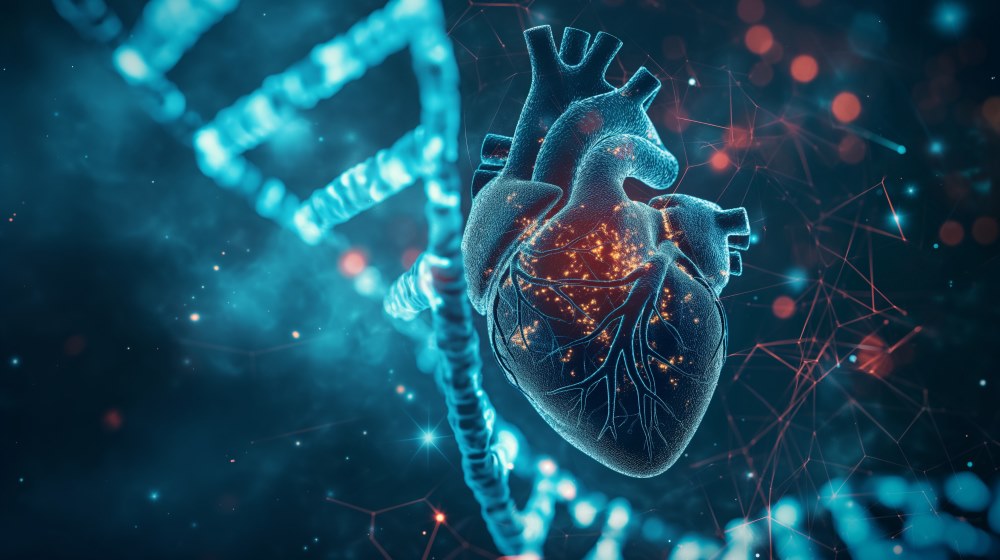Tailoring Cardiac Treatments Based on Genetic Information

Heart disease is the world’s leading killer, claiming 18.6 million lives annually. Here’s the kicker—up to 60% of the risk can be inherited.
Imagine this: two people eat the same diet, follow the same exercise routine, and maintain the same healthy lifestyle. However, one develops heart disease while the other doesn’t. It’s a frustrating truth that may lie in something neither of them can see—their genetics. The truth is that genetics and heart disease are linked closer than many people would like to believe.
This brings up an important question: How can new medical advancements better tackle the unique genetic risks tied to cardiac conditions?
What if treatment for your cardiovascular condition is as unique as your fingerprint? Scientists are researching how our DNA holds the key to understanding and preventing heart disease. The future of cardiology is no longer one-size-fits-all; it’s an innovative approach to treating the root cause rather than the symptoms.
Advances in genetic science are bringing hope to millions worldwide, from editing faulty genes to silencing harmful proteins. Genetic cardiologists’ breakthroughs could shape and improve the future of heart health.
What is Gene Editing Therapy for Cardiovascular Disease?
Think of gene editing therapy as a molecular surgeon for your DNA, cutting out bad parts and fixing parts broken at birth. Scientists use advanced tools like CRISPR-Cas9 to target genetic mutations that cause heart disease.
Traditional Treatments vs Gene Editing
For instance, familial hypercholesterolemia is a genetic condition leading to sky-high cholesterol levels, significantly increasing the risk of heart attacks. Traditional treatments like prescriptions may temporarily reduce cholesterol, but gene editing would offer a permanent solution. Early studies have shown that modifying the genes responsible for cholesterol regulation can slash levels by over 50%. While genetics and heart diseases are interwoven, it can be managed.
Instead of a lifetime of medication to manage heart disease symptoms, a single treatment could rewrite your genetics. What may sound like science fiction is happening now.
What Does a Genetic Cardiologist Do?
Advancing cardiac care wouldn’t be possible without the expertise and dedication of genetic cardiologists, who help uncover the genetic factors shaping heart health.
Genetic cardiologists are a rare breed, and few are in their field. However, these specialists focus on pinpointing and treating (sometimes curing) heart conditions with genetic causes. Their detective skills go beyond stress tests and stethoscopes.
Unique Perspective and Diagnostic Expertise
Need an example? Hypertrophic cardiomyopathy is a genetic condition where the heart muscle becomes abnormally thick, making it challenging for the heart to pump blood effectively. The condition is passed down through families, but a genetic cardiologist could dig into your family tree to find the genetic mutation responsible. They may even recommend genetic testing for your siblings and children, potentially preventing future heart-related health issues and tragedies.
Genetic cardiologists bridge the gap between scientific findings and real-world healthcare. Their work saves lives by tackling the root cause of chronic, sometimes deadly, heart issues.
What is the Difference Between Gene Replacement Therapy and Gene Editing?
Learning about the differences in genetic therapies helps us see how each one plays a part in advancing cardiac medicine.
Gene therapy has become popular in heart disease treatment, but not all therapies are created equal. Here’s a breakdown of differences between two of the most prominent players in genetics and heart disease: gene replacement therapy and gene editing.
- Gene Replacement Therapy. Think of GRT as replacing a faulty light bulb with a new one. Scientists introduce a new, healthy version of genes to replace defective ones. This approach is used for conditions where a mission or non-functioning gene causes health problems, like dilated cardiomyopathy (a condition where the heart’s main pumping chamber is enlarged and weak).
- Gene Editing. Now, imagine fixing the wiring instead of replacing the light bulb. Gene editing modifies faulty DNA to repair, delete, or tweak genetics causing health issues. This method is ideal for single-gene mutations, like those linked to arrhythmias (irregular heartbeats).
While both therapies are promising, they serve different purposes. Sometimes, the best approach may be to combine the two.
What are RNA Therapeutics for Cardiovascular Disease?
If DNA is life’s blueprint, RNA is the messenger that delivers the user manual. RNA therapeutics tap into this process to stop harmful “messages” or amplify helpful ones.
One example is inclisiran, an innovative RNA therapy approved to lower LDL (bad) cholesterol. It targets PCSK9, a protein that interferes with your body’s ability to clear cholesterol from the blood. The results showed a 50% reduction in LDL cholesterol, with effects lasting months after one injection.
RNA therapies are also being explored to treat clogged arteries and heart failure. These treatments offer a precise, minimally invasive solution to address heart disease at its source.
Shaping the Future of Cardiac Care
Heart disease is known in the healthcare community as a silent thief, stealing lives despite medical professionals’ best efforts to combat it. Breakthroughs in genetics and heart disease are set to change that, and the future of cardiac care looks bright, whether through editing genes, replacing them, or silencing harmful RNA messages.
What does this mean for you? A world where heart disease treatments are tailored to your genetic information, offering hope for better outcomes and healthier lives.


